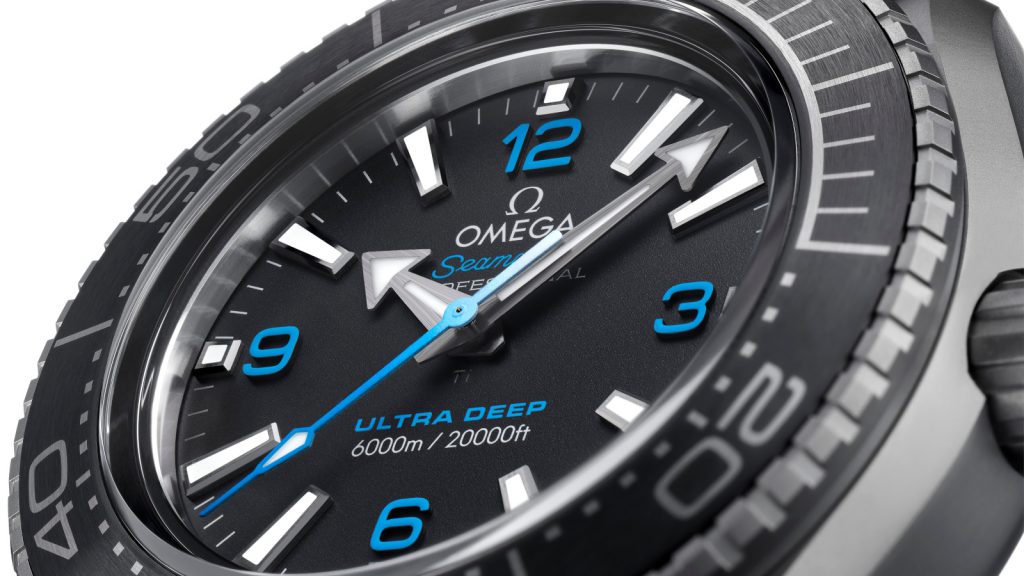The Seamaster Planet Ocean Ultra Deep has survived the ultimate test. In 2019, Omega sent three prototypes on a descent to 10,935 metres (35,876 feet, about 6.8 miles) into the Mariana Trench, the deepest part of the ocean. The mission was headed by Victor Vescovo, an explorer and retired naval officer who has navigated the deepest trenches, discovering several new species along the way. He is recognised by Guinness World Records for having covered the greatest vertical distance without leaving the earth’s surface (he has also climbed Mount Everest).
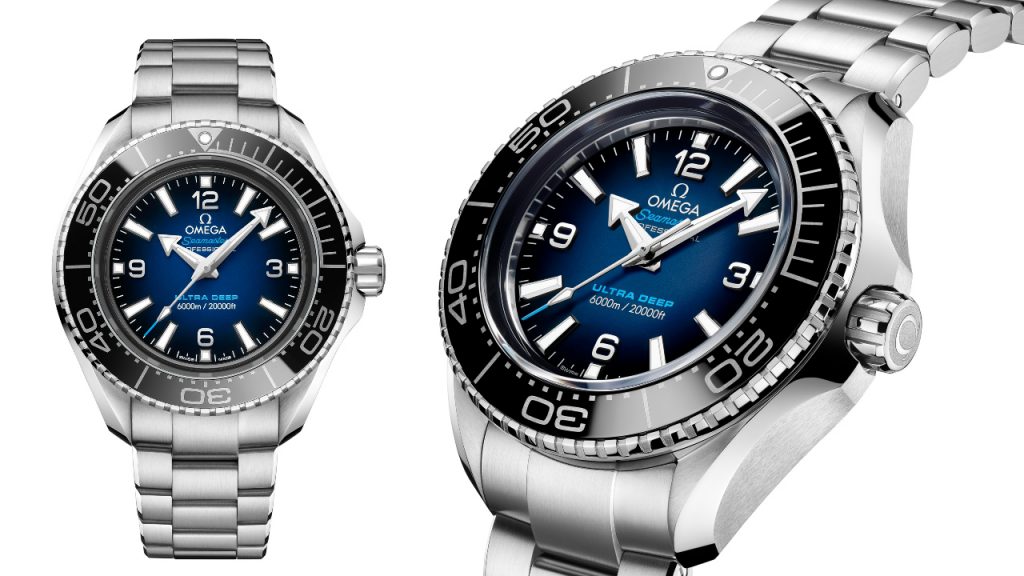
Two Ultra Deep timepieces were attached to the robotic arm of Vescovo’s submarine, the Limiting Factor, and another to a data-gathering unit known as a lander. All three completed the 12-hour dive unscathed and in working order. The extreme test was comparable to one Rolex undertook in the 1960s, when it sent an early version of its Sea-Dweller down to the Mariana Trench with the French diving company Comex (Compagnie Maritime d’Expertises). While the Rolex Sea-Dweller made the plunge equipped with a helium valve, Omega’s Ultra Deep, like most of its dive watches, is designed with a case that is helium-proof to begin with, so there is no need for a release valve.
Omega first introduced the Seamaster in 1948, followed by the Seamaster 300 in 1957 and a few years later, the Seamaster 600 Ploprof (the first few letters of the words plongeurs professionnels meaning “professional divers” in French), which achieved 600-metre water resistance. In 1971, Omega debuted the Automatic Seamaster 1000, a professional divers’ watch rated to 1,000 metres. Instead of a helium valve, it had a tough, monoblock stainless steel case with a screwed crown that was equipped with compression gaskets.
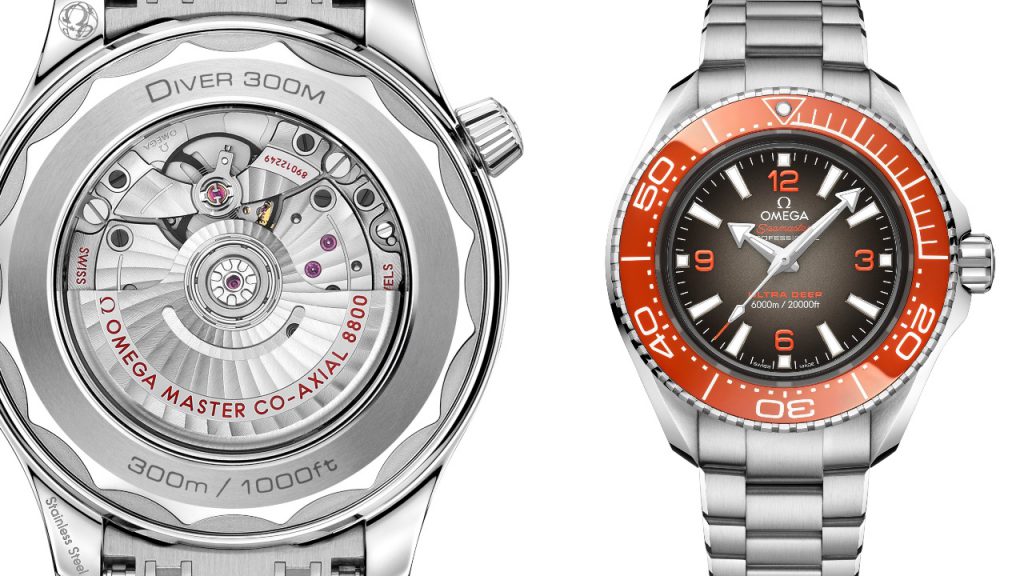
The new Ultra Deep collection, with water resistance up to 6,000 metres, or about 20,000 feet, is a scaled-down version (45.5 mm wide and 18.12 mm thick) of the Mariana Trench-diving prototype, which had a 55 mm x 28 mm case. It meets the ISO 6425 certification for saturated diving, with a case design claiming four newly pending patents concerning the crystal, crystal gasket, crown and two-piece caseback. It is made either of brushed titanium—an excellent choice on such a large watch since it is lightweight—or a new alloy called O-MEGASTEEL, a high-performance stainless steel alloy that Omega says has superior strength, a whiter colour and exceptional resistance to corrosion for a longer-lasting appearance.
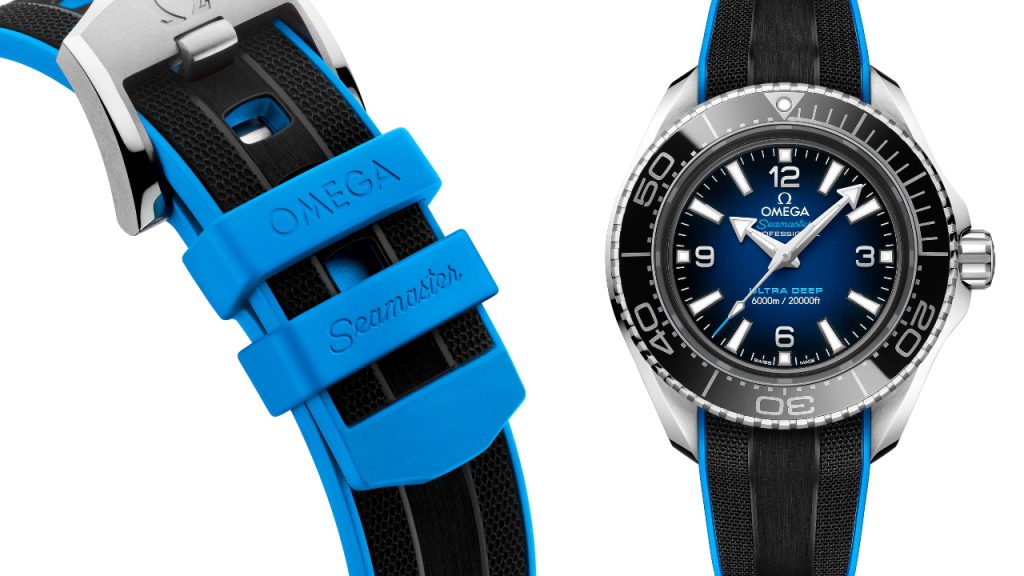
There are seven references, with white, black or gradient gray-to-black or blue-to-black dials; a choice of NATO, rubber or metal strap; and a titanium or O-MEGASTEEL case. Hands are treated with Super-LumiNova that glows blue on the hour and seconds hands, green on the minute hand and white to cyan on the seconds hand. A wide (highly readable) ceramic bezel insert comes in orange, black or titanium, with a white diving scale. For the metal bracelets, OMEGA’s patented extendable foldover rack-and-pusher has been included, with a complementary length adjustment and an extra diver extension to fit around a wetsuit.
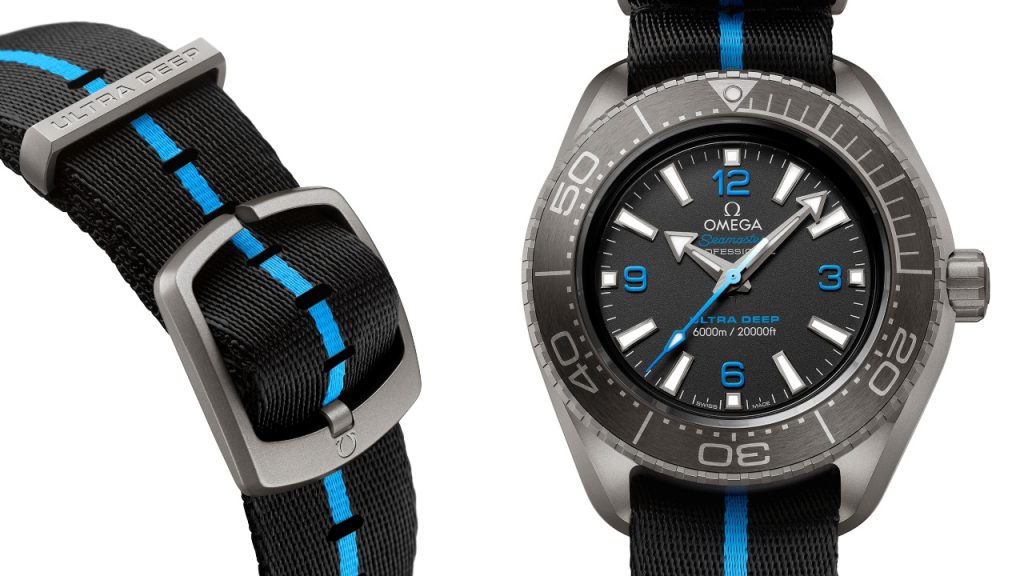
The movement is the Co-Axial master chronometer automatic caliber 8912 with a 60-hour power reserve. It’s fully finished and decorated, but as a diver’s watch the caseback is closed, so you can’t see it. The caseback, however, is engraved with the Omega logo and Seahorse marque. Pricing for the Ultra Deep starts at US$11,200 (about RM47,000) for the steel versions with a rubber strap, US$11,600 (almost RM49,000) for the steel with bracelet, and US$12,300 (just under RM52,000) for the titanium model on a NATO strap.
The NATO strap, by the way, is, made from polyamide yarn, sourced from recycled fishing nets, something of a trend in luxury watches now. According to Recycling Today, 640,000 tons of fishing gear get discarded into the oceans each year. Dolphins, sea turtles and whales have been found entangled in the nets, and many of them die as a result. It’s left up to recycling companies to recover the nets, mainly by employing divers.
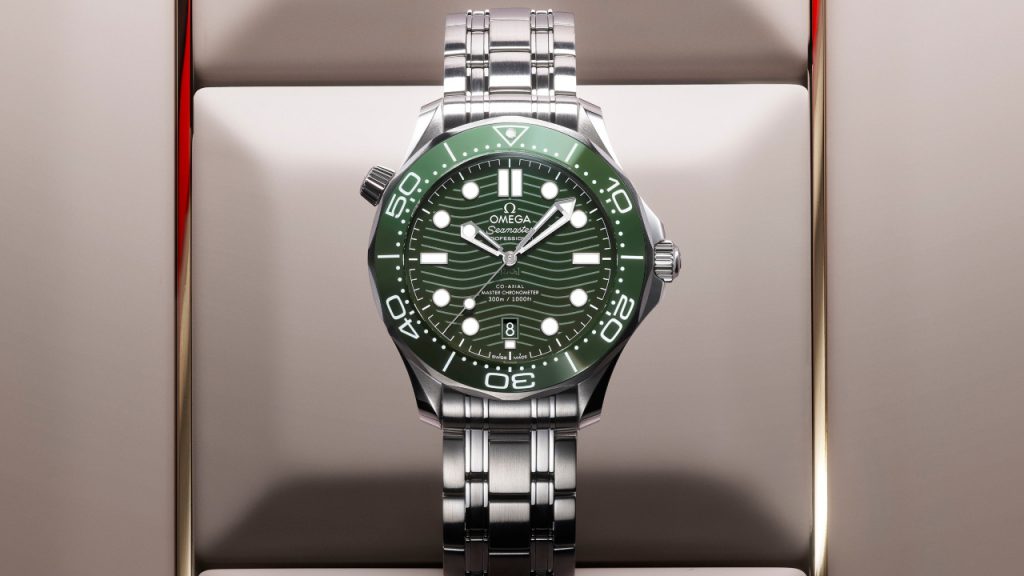
Omega also dropped a new Seamaster Professional Diver 300M. You may remember that the Seamaster line, introduced in 1993, has been the choice of James Bond since 1995. The new model is a little bit dressier, perhaps keeping in mind that, sporting as he is, 007 occasionally dons a tux. The new, deep green dial is made of ceramic, with laser engraved waves, and it has a ceramic bezel ring with a grand feu enamel diving scale. A new polished and brushed stainless steel bracelet is integrated into the case, but it can be swapped out for an integrated rubber strap. The 42mm watch has a unidirectional rotating bezel and although it’s not equipped for a journey to the Mariana Trench, it stands ready to support James Bond in combat with the world’s villains down to at least 300 metres.
Diving boldly into waters where others have gone before, Omega also released 10 new references in the 150-metre rated Seamaster Aqua Terra 38 mm and 34 mm collections that are all about dial colours, offering some competition to Rolex’s hugely popular Oyster Perpetual watches in an array of colours released last year. At the height of the quartz era, fashion watches (under US$500) ruled the market, and their salient feature was colour—an endless choice of hues and combinations of colours, with new designs introduced almost weekly. At the time, the more staid, serious mechanical watches, seeking a footing in a quartz-dominated world, positioned themselves above all the fuss of busy colours, adopting more conservative designs. Today, the luxury watch world, now on top, seems to be relaxing a little bit and showing some colour. The 38 mm-series dials come in a choice of Atlantic blue, bay green, sandstone, saffron and terracotta, while the 34mm references weigh in with dials of sea blue, lagoon green, sandstone, shell pink or lavender. The colours transition from “aqua” to “terra” in keeping with the name of the line.
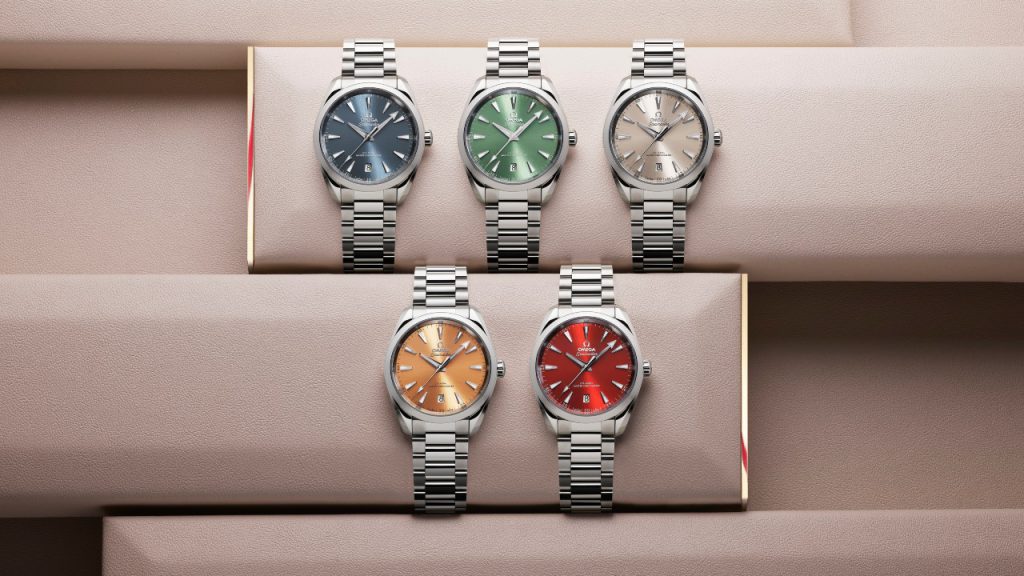
The brass dials are sun-brushed from the center, with rhodium-plated hands and indexes on the 38 mm versions and 18k white gold hands and indexes on the 34 mm models. The bracelets have been redesigned, with rounded links for a more supple feel on the wrist. Surprisingly, there are no strap options. Both sizes contain the Co-Axial master chronometer calibre 8800 with a 55-hour power reserve. Both the 34mm and 38mm versions retail for US$6,000 (just over RM25,000).
These should, for now at least, be easier to score than their Oyster Perpetual predecessors, some of which are selling in the secondary market for double to triple their retail prices, but interested clients should act fast if pondering whether or not to take the plunge.
Previously published on Robb Report.
